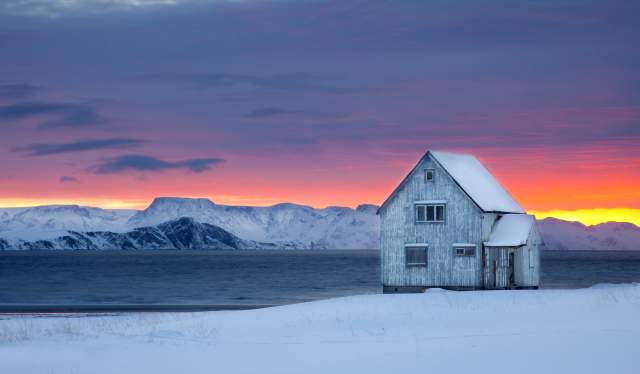How To Photograph The Northern Lights Iphone
The best time and place
Nature provides the lights, you have the camera, so it is time for action. The best times and places to witness the magic are north of the Arctic Circle in late autumn and winter, as well as early spring (September to late March).
When you plan where to watch the northern lights from, you can check out the local's favourite viewpoints by yourself or join a guided tour.
If you want to see the aurora from the sea, book a trip with Hurtigruten. They sail directly beneath the auroral oval and even have a northern light alarm to make sure you don't miss the magic – also if you are sound asleep when aurora decides to go dancing.
Capture the polar night lights
In the northernmost part of Norway, the polar night is characteristic of the winter months. The contrast between night and day gets blurred as weeks can go by without the sun ever rising above the horizon. Perfect if you're chasing aurora, as sunlight won't obscure the northern lights.
But the polar night doesn't mean you're stuck without a glimmer of light during the day. Unless you visit the Svalbard islands, that is, where it is pitch black for a few weeks mid-winter. In the northern parts of the mainland, it is just a different kind of light. On clear days, you can see beautiful sunset colours in the south, and a deep blue tint in the north.

Hasvik, Finnmark.
Photo: Anne Olsen Ryum www.nordnorge.com/hasvik
During "the blue hour" at twilight, the landscape is covered in what seems like a thin, blue veil. This can actually last for more than an hour and creates a strange feeling. It's dark, yet not completely. It's cold, yet the warm lights from all the houses make it warm and cosy. Definitely worth capturing with a camera!
3 nerdy facts about the Auroras
1. The light show appears when charged particles from the sun are dragged into the atmosphere by the earth's magnetic field and collide with nitrogen and oxygen atoms. This collision releases flashes of coloured lights – which we see as the northern lights.
2. The colour of the light depends on the type of atoms involved in the collision.
3. Aurora borealis isn't the only light show the universe offers. The southern hemisphere has its own version called aurora australis – the southern lights.
Curious to know more? Read up on the facts and fiction about the northern lights.
How To Photograph The Northern Lights Iphone
Source: https://www.visitnorway.com/things-to-do/nature-attractions/northern-lights/how-to-photograph/
Posted by: songfoloot.blogspot.com

0 Response to "How To Photograph The Northern Lights Iphone"
Post a Comment